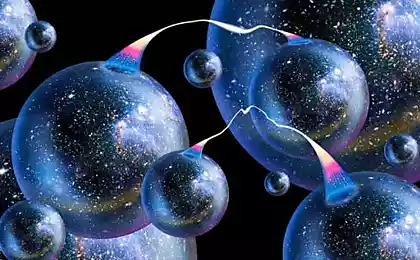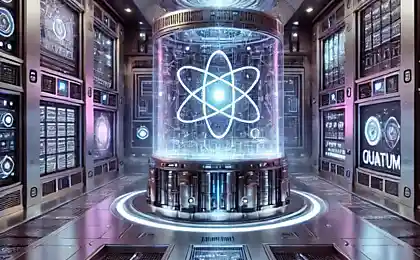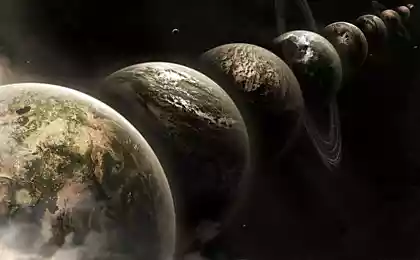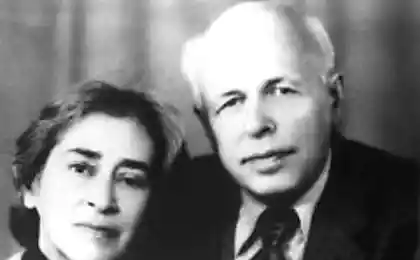516
What is the role of quantum fluctuations in the origin of the Universe?

Data collected by the Planck telescope have confirmed a definite theory of the quantum origin of cosmic structure. What happened after the birth of the Universe? Why formed stars, planets and vast galaxies? These questions tries to answer Vyacheslav Mukhanov, a cosmologist from the University Ludwig Maximilian in Munich, an expert in the field of theoretical cosmology.
Mukhanov used the concept of the so-called quantum fluctuations to construct a theory that provides an accurate picture of the crucial initial stage of evolution of our Universe: without the minimal variations in energy density that appear from the tiny but unavoidable quantum fluctuations, it is impossible to imagine the formation of stars, planets and galaxies representing the known Universe.
Plank Consortium has published new analyses of data collected by the Planck space telescope, which measures the distribution of cosmic microwave background radiation (CMB). It tells us how in fact the universe looked after 400 000 years after the Big Bang. The latest data are in full accordance with the predictions of Mukhanov's theory — for example, to calculate the value of the so-called spectral index of the initial inhomogeneities.
"The Planck data confirm the basic predictions that quantum fluctuations are the basis of the origin of all structures of the Universe, says Jean-Loup Puget, principal investigator of the HFI instrument on the Planck satellite. Mukhanov, first published his model in 1981 and joined the faculty of physics of the University in 1997, says he "could not expect a better confirmation of his theory."
The idea that quantum fluctuations must have played a role at an early stage in the history of the Universe, derives from the Heisenberg's uncertainty principle. Heisenberg showed that there is no specific limit to the precision with which you can define the position and momentum of a particle at any given moment. This, in turn, implies that the initial distribution of matter will exhibit the minute variations in the density. Mukhanov's calculations first showed that such quantum fluctuations can affect the difference of densities in the early Universe, which in turn can become the seeds of galaxies and their clusters. In fact, without quantum fluctuations, the nature and magnitude of which is quantitatively described Mukhanov, the observed distribution of matter in the Universe would be inexplicable.
A recent study of data sets Planck's more detailed and informative than the preliminary analysis published about two years ago. It shows patterns, printed the primary fluctuations in the distribution of the radiation of the young Universe with unprecedented precision. Tools like the Planck telescope can record these dispatches from an unimaginably remote past encoded in the microwave background that go across space for 13.8 billion years. From this information I was able to reconstruct the Planck team, resulted in a detailed picture of the distribution of matter during the birth of the Universe.
In addition, the Planck data show that the signal confirming the possible existence of primary gravitational waves, previously obtained, can be seriously associated with dust in our own galaxy. The BICEP2 team uses ground-based telescope in Antarctica to find signs of gravitational waves, born immediately after the Big Bang.
In March 2014, the group reported the discovery of a long-awaited pattern. Soon, however, this interpretation is drowned under the weight of doubt. Joint analysis of Planck and BICEP2 teams has led scientists to the conclusion that data directly confirming the existence of gravitational waves, yet. In the spring of 2014 Mukhanov had come to the conclusion that if his theory is correct, the team BICEP2 and Planck could be wrong both.
This latest Planck — BICEP2 shows that the theoretical basis is justified. "Gravitational waves may be there, — said Mukhanov, but our tools may not be sufficiently sensitive to detect them". Regardless of what will turn the search for the primary gravity waves, none of the models that tries to capture the state of the Universe after the Big Bang, can't do without quantum origin of structures in the Universe.published
P. S. And remember, only by changing their consumption — together we change the world! ©
Source: hi-news.ru
SRT Tomahawk: hypercar with a capacity of 2590 HP will enter production in 2035
The idea of meatless pâté, sauces and baking























